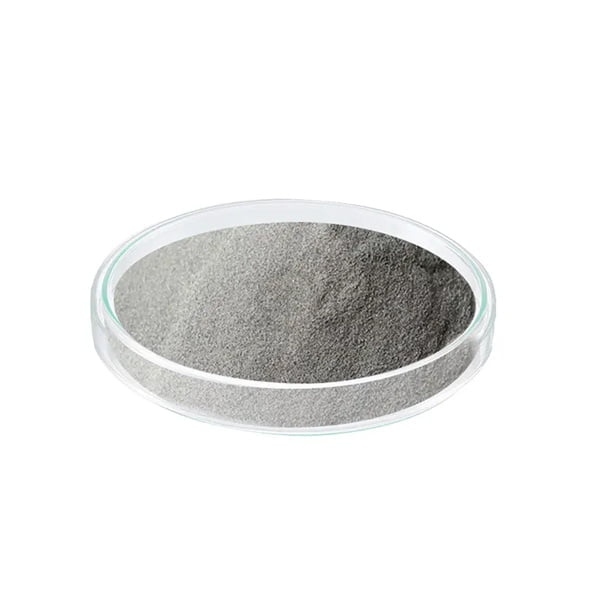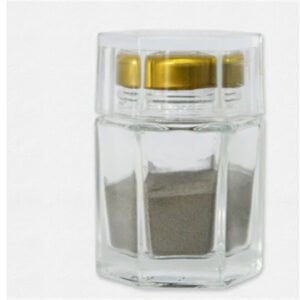Průběh procesu tryskání materiálu
Obsah
Představte si tiskárnu, která nejen nanáší inkoust na papír, ale vytváří složité objekty vrstvu po vrstvě jako malý sochař s tekutými stavebními bloky. To je podstata tryskání materiálu, revoluční technologii 3D tisku, která mění design a výrobu napříč průmyslovými odvětvími.
Tryskání materiálu: Miniaturní revoluce v inkoustovém tisku
Tryskání materiálu funguje podobně jako běžná inkoustová tiskárna. Místo barevných inkoustů však využívá oslnivou škálu materiálů, jako jsou fotopolymery, vosky, a dokonce i kovy. Tyto materiály jsou nanášeny v drobných kapičkách z tiskové hlavy a pod UV světlem nebo teplem rychle tuhnou a vytvářejí jednotlivé vrstvy požadovaného objektu. Představte si to jako pečlivé malování 3D mistrovského díla, vrstvu po vrstvě.
Složitý tanec tryskání materiálu
Nyní se ponoříme do fascinující choreografie, která oživí vaši 3D vizi:
1. Příprava jeviště: Připravte se na úspěch
Cesta začíná virtuálním modelem rozřezaným na tenké digitální vrstvy. Představte si bochník chleba pečlivě nakrájený na vodorovné plátky - každý plátek představuje vrstvu, na které bude tiskárna stavět.
2. Výběr materiálu: Výběr správných stavebních prvků
Dále je důležitý výběr materiálů. Typ zvoleného materiálu závisí na požadovaných vlastnostech konečného výrobku. Potřebujete pevný a odolný předmět? Zvolte kovové prášky. Vysoké detaily a zářivé barvy? Pak si vyberete fotopolymery.
3. Tryskání materiálu v akci: Vrstvení kouzla
Tisková hlava vybavená stovkami malých trysek přesně vystřikuje kapičky zvoleného materiálu na konstrukční platformu. Stejně jako inkoustová tiskárna se řídí digitálním plánem a pečlivě vytváří každou vrstvu na předchozí.
4. Tuhnutí: Uzamčení formy
Při ukládání jednotlivých vrstev dochází k jejich rychlé přeměně. Fotopolymery se vytvrzují UV světlem, zatímco kovové prášky se mohou vytvrzovat teplem nebo kombinací světla a tepla. Tím materiál ztuhne, čímž se uzamkne v požadovaném tvaru.
5. Velké odhalení: Následné zpracování pro dosažení dokonalosti
Jakmile je poslední vrstva hotová, sestavovací plošina se spustí a odhalí nově vytvořený objekt, který se koupe v bazénu nevyužitého materiálu. Tento přebytečný materiál bude odstraněn ve fázi následného zpracování, která může zahrnovat čištění, odstranění podpěr (u dílů s převisy) a další dokončovací úpravy.

podrobné představení Tryskání materiálu Kovové prášky
Schopnost tryskání materiálu využívat kovové prášky otevírá dveře do zcela nové oblasti možností. Zde jsou uvedeny některé z nejoblíbenějších kovových prášků používaných v tomto procesu a jejich klíčové vlastnosti:
| Materiál | Popis | Vlastnosti |
|---|---|---|
| Nerezová ocel 17-4 PH | Všestranná a široce používaná možnost, která nabízí dobrou pevnost, odolnost proti korozi a biokompatibilitu. | Ideální pro funkční prototypy, letecké komponenty a lékařské přístroje. |
| Inconel 625 | Vysoce výkonná slitina niklu a chromu, která se vyznačuje mimořádnou pevností, tepelnou odolností a odolností proti korozi. | Ideální pro náročné aplikace, jako jsou součásti tryskových motorů a vysokoteplotní nástroje. |
| Titan 6Al-4V (třída 23) | Lehká a biokompatibilní slitina titanu s vynikajícím poměrem pevnosti a hmotnosti. | Díky své lehkosti a biokompatibilitě se hojně používá v letectví, lékařských implantátech a sportovních potřebách. |
| Měď | Vysoce vodivý kov ideální pro aplikace vyžadující vynikající elektrické vlastnosti. | Používá se k výrobě elektrických součástí, výměníků tepla a prototypů vyžadujících vysokou vodivost. |
| Maraging Steel | Rodina ocelí známá svou vysokou pevností a houževnatostí, které se dosahuje jedinečným procesem stárnutí. | Ideální pro výrobu pevných a lehkých nástrojů, ozubených kol a konstrukčních prvků. |
| Nikl | Čistý niklový prášek s dobrou odolností proti korozi a tažností. | Používá se k vytváření galvanických forem, elektrod a součástí vyžadujících dobrou obrobitelnost. |
| Zlato | Drahý kov ceněný pro svou estetiku a elektrickou vodivost. | Často se používá k výrobě prototypů šperků, ozdobných prvků a elektrických kontaktů. |
| Silver | Další drahý kov známý svou vynikající elektrickou vodivostí a odrazivostí. | Používá se k vytváření elektrických součástek, prototypů šperků a vysoce reflexních povrchů. |
| Hliník | Lehký a snadno dostupný kov s dobrou tvářitelností a obrobitelností. | Ideální pro vytváření lehkých prototypů, chladičů a nekritických konstrukčních součástí (ve srovnání s ostatními kovy v tomto seznamu). |
| Kovar | Slitina s řízenou roztažností a koeficientem tepelné roztažnosti, který se blíží sklu. | Používá se k vytváření těsnění mezi sklem a kovem v elektronických zařízeních a vědeckých přístrojích. |
Výhody a aspekty tryskání materiálu
Tryskání materiálu má několik výhod, které z něj činí přesvědčivou volbu pro různé aplikace:
- Vysoké rozlišení a přesnost: Díky přesnému tryskání materiálů lze tryskáním materiálu vyrábět díly s výjimečnou detailností a rozměrovou přesností. Díky tomu je ideální pro vytváření složitých prototypů, detailních modelů a funkčních dílů s přísnými tolerancemi.
- Široká škála materiálů: Jak jsme již prozkoumali, tryskání materiálů nabízí rozmanitý výběr materiálů, od fotopolymerů se zářivými barvami až po robustní kovy pro funkční aplikace. Tato všestrannost umožňuje vytvářet objekty se specifickými vlastnostmi potřebnými pro váš projekt.
- Možnost použití více materiálů: Některé pokročilé systémy pro tryskání materiálů mohou dokonce využívat více materiálů v rámci jedné konstrukce. Představte si, že vytvoříte díl s pevným kovovým jádrem a pružnou vnější vrstvou podobnou gumě - a to vše vytisknete najednou! To otevírá dveře inovativním konstrukcím se složitými funkcemi.
- Rychlá doba vyřízení: V porovnání s tradičními výrobními metodami umožňuje tryskání materiálu rychlou tvorbu prototypů a výrobu malých sérií. To může výrazně urychlit proces návrhu a vývoje.
- Hladké povrchové úpravy: Tryskáním materiálu se často vyrábějí díly s hladkým povrchem, což snižuje potřebu rozsáhlého následného zpracování. To může být velkou výhodou pro aplikace, kde je důležitá estetika.
Stejně jako každá jiná technologie má však i tryskání materiálu svá specifika:
- Omezení objemu sestavení: Tiskárny s tryskovým tiskem materiálu mají ve srovnání s některými jinými technologiemi 3D tisku obvykle menší objem. To může omezovat velikost dílů, které můžete vytvořit.
- Náklady na materiál: Kovové prášky a některé vysoce výkonné fotopolymery mohou být ve srovnání s materiály používanými při jiných metodách 3D tisku poměrně drahé. To se může promítnout do celkových nákladů projektu.
- Požadavky na následné zpracování: Přestože tryskání materiálu často vytváří díly s dobrou povrchovou úpravou, může být v závislosti na složitosti konstrukce nutné provést některé následné úpravy, jako je odstranění podpěr a čištění.
- Podpůrné struktury: U dílů s převisy nebo složitou geometrií mohou být při tisku nutné podpůrné konstrukce. Tyto dočasné konstrukce je třeba po tisku odstranit, což může prodloužit čas a zkomplikovat proces.
Aplikace z Tryskání materiálu
Tryskání materiálu nachází uplatnění v různých průmyslových odvětvích, z nichž každé využívá své jedinečné možnosti:
- Letectví: Vytváření prototypů lehkých a vysoce pevných součástí pro letadla, satelity a kosmické lodě.
- Automobilový průmysl: Vytváření funkčních prototypů a konečných dílů pro automobily, motocykly a další vozidla.
- Lékařský: Výroba biokompatibilních implantátů, zubních protéz a chirurgických nástrojů.
- Spotřební zboží: Vývoj prototypů a výroba malých sérií šperků, brýlí a dalších spotřebních výrobků.
- Elektronika: Vytváření složitých elektrických součástek, desek plošných spojů a konektorů.
Tryskání materiálu vs. jiné metody 3D tisku
Při výběru technologie 3D tisku je důležité pochopit, jak si tryskání materiálu stojí v porovnání s konkurencí. Zde je stručné srovnání:
- Tavené depoziční modelování (FDM): FDM je oblíbená a cenově dostupná technologie, která využívá filament k vytváření dílů vrstvu po vrstvě. FDM však obecně nabízí nižší rozlišení a omezenější výběr materiálů ve srovnání s tryskáním materiálu.
- Selektivní laserové slinování (SLS): SLS využívá laser ke spékání práškových materiálů. Může vytvářet pevné a funkční díly, ale často s drsnější povrchovou úpravou ve srovnání s tryskáním materiálu.
- Stereolitografie (SLA): Podobně jako při tryskání materiálu se při SLA k vytvrzování tekutých fotopolymerů používá laser. Tiskárny SLA však mají obvykle menší objem a mohou vyžadovat rozsáhlejší kroky následného zpracování.
Budoucnost tryskání materiálu
Tryskání materiálu je rychle se vyvíjející technologie. Zde je několik zajímavých trendů, které je třeba sledovat:
- Vývoj nových materiálů: Výzkumníci neustále vyvíjejí nové materiály pro materiálové tryskání, včetně biokompatibilních možností pro pokročilé lékařské aplikace a dokonce i vodivých materiálů pro vytváření funkční elektroniky přímo z tiskárny.
- Zvýšené objemy staveb: S technologickým pokrokem můžeme očekávat, že se objeví tryskání materiálu tiskárny s většími stavebními objemy, což otevírá dveře k vytváření ještě větších a složitějších objektů.
- Pokroky ve více materiálech: Očekávejte ještě sofistikovanější možnosti práce s více materiály, které umožní vytvářet díly s širší škálou funkcí a vlastností v rámci jednoho sestavení.
FAQ
A: Tryskání materiálu nabízí vysoké rozlišení a přesnost, širokou škálu materiálů, možnost použití více materiálů, rychlou dobu realizace a hladkou povrchovou úpravu.
Otázka: Jaká jsou některá omezení tryskání materiálu?
Odpověď: Materiálové tryskání má ve srovnání s jinými technologiemi obvykle menší objem a některé materiály mohou být drahé. Kromě toho může být nutné následné zpracování, podpůrné struktury mohou zvyšovat složitost a materiálové tryskání nemusí být vhodné pro velkosériovou výrobu.
Otázka: V jakých odvětvích se používá tryskání materiálu?
Odpověď: Tryskání materiálů nachází uplatnění v leteckém a automobilovém průmyslu, zdravotnictví, spotřebním zboží, elektronice a mnoha dalších odvětvích.
Otázka: Jak si vede tryskání materiálu ve srovnání s jinými technologiemi 3D tisku?
Odpověď: V porovnání s technologií FDM nabízí tryskání materiálu vyšší rozlišení a více možností výběru materiálu. Poskytuje hladší povrchové úpravy než SLS a může být rychlejší než SLA, i když tiskárny SLA mohou mít v některých případech vyšší rozlišení.
Otázka: Jaký je výhled do budoucna v oblasti tryskání materiálu?
Odpověď: Budoucnost tryskání materiálů je jasná, protože na obzoru jsou pokroky ve vývoji materiálů, zvýšené objemy výroby a ještě sofistikovanější možnosti využití více materiálů.
závěr
Tryskání materiálu je mocným nástrojem pro konstruktéry, inženýry a inovátory napříč průmyslovými odvětvími. Díky své schopnosti vyrábět vícemateriálové díly s vysokým rozlišením a různými vlastnostmi je ideální pro výrobu prototypů, vytváření funkčních dílů pro konečné použití a dokonce i pro posouvání hranic designu. S dalším vývojem této technologie můžeme očekávat, že se objeví ještě více zajímavých možností, které v příštích letech změní způsob navrhování a výroby předmětů.
Pokud tedy hledáte technologii 3D tisku, která nabízí výjimečné detaily, všestrannost a rychlost, může být tryskání materiálu pro váš příští projekt ideální. Díky svým stále se rozšiřujícím možnostem je materiálový tryskový tisk připraven hrát klíčovou roli při utváření budoucnosti výroby a vývoje produktů.
Sdílet na
MET3DP Technology Co., LTD je předním poskytovatelem řešení aditivní výroby se sídlem v Qingdao v Číně. Naše společnost se specializuje na zařízení pro 3D tisk a vysoce výkonné kovové prášky pro průmyslové aplikace.
Dotaz k získání nejlepší ceny a přizpůsobeného řešení pro vaše podnikání!
Související články

Vysoce výkonné segmenty lopatek trysek: Revoluce v účinnosti turbín díky 3D tisku z kovu
Přečtěte si více "O Met3DP
Nedávná aktualizace
Náš produkt
KONTAKTUJTE NÁS
Nějaké otázky? Pošlete nám zprávu hned teď! Po obdržení vaší zprávy obsloužíme vaši žádost s celým týmem.

Kovové prášky pro 3D tisk a aditivní výrobu
SPOLEČNOST
PRODUKT
kontaktní informace
- Město Qingdao, Shandong, Čína
- [email protected]
- [email protected]
- +86 19116340731
















